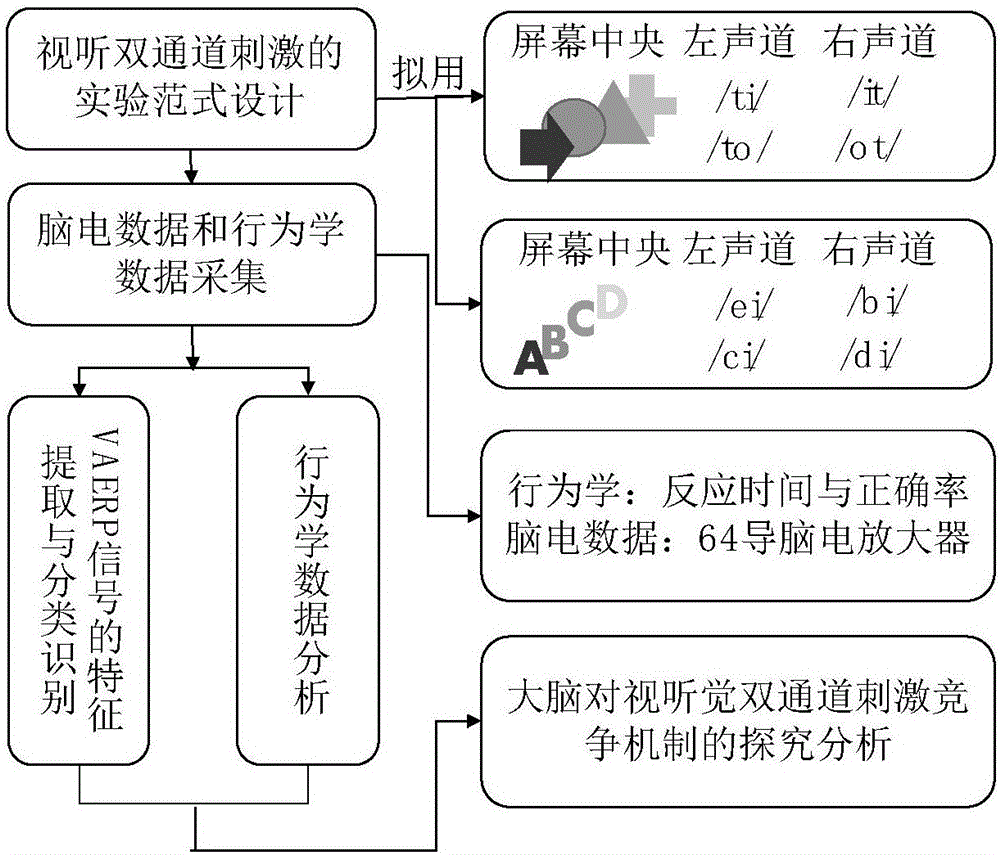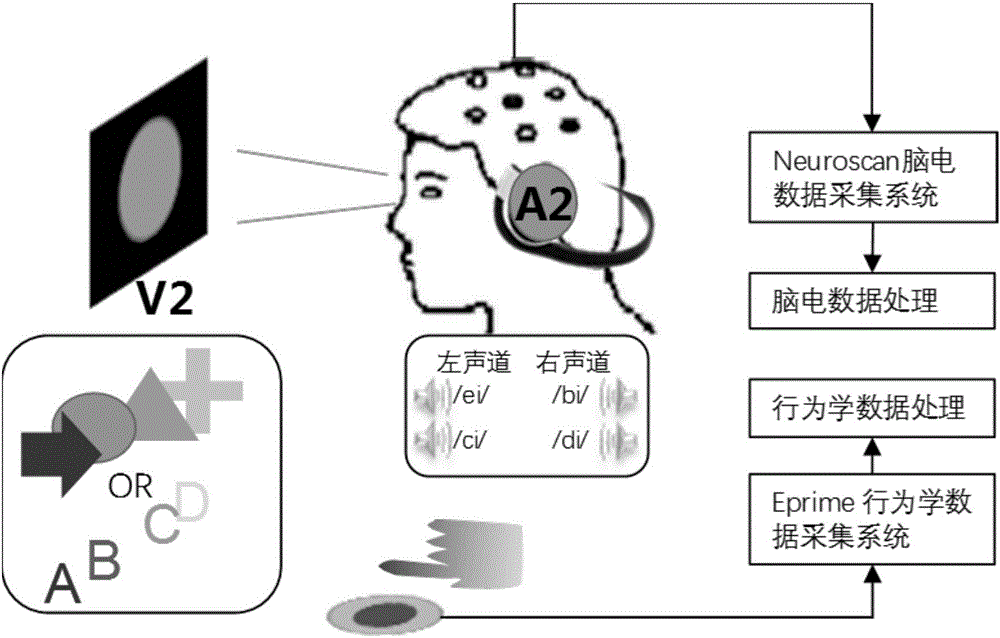Audiovisual dual-mode semantic matching and semantic mismatch co-stimulus brain-computer interface paradigm
A technology of semantic matching and co-stimulation, applied in the direction of mechanical mode conversion, computer components, user/computer interaction input/output, etc., can solve problems such as limited research plans, inconsistent conclusions, and inconspicuous differences, and achieve fast response speed , improve efficiency, and respond to large effects
- Summary
- Abstract
- Description
- Claims
- Application Information
AI Technical Summary
Problems solved by technology
Method used
Image
Examples
Embodiment Construction
[0038]The invention proposes a brain-computer interface (BCI) paradigm based on an audio-visual bimodal semantic matching and mismatching coordination mechanism. The synergy relationship refers to the relationship between bimodal information when the visual and auditory information represent the same meaning and the brain responds to the fusion information of audiovisual and auditory information. The brain response mechanism at this time is referred to as "cooperative mechanism". The present invention transforms the traditional single-modal stimulation method into a dual-modal stimulation method with simultaneous visual and auditory stimulation, thereby eliciting a corresponding audio-visual dual-modal event-related potential signal (VAERP), through the extraction of VAERP features and Classification can realize the output of brain control commands. This design facilitates the study of synergistic mechanisms of audiovisual bimodality under different stimulus paradigms.
[003...
PUM
 Login to View More
Login to View More Abstract
Description
Claims
Application Information
 Login to View More
Login to View More - R&D
- Intellectual Property
- Life Sciences
- Materials
- Tech Scout
- Unparalleled Data Quality
- Higher Quality Content
- 60% Fewer Hallucinations
Browse by: Latest US Patents, China's latest patents, Technical Efficacy Thesaurus, Application Domain, Technology Topic, Popular Technical Reports.
© 2025 PatSnap. All rights reserved.Legal|Privacy policy|Modern Slavery Act Transparency Statement|Sitemap|About US| Contact US: help@patsnap.com



